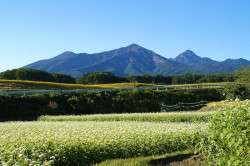
December 24, 2024
Historical Eats: Savor the Flavors of the Edo Era in Tokyo
Historic delicacies from soba and unagi to monkfish and more
Escape the noise of modern life and step into a world where time stands still. For those seeking a deeper, more authentic dining experience in Tokyo, bravery and a willingness to embrace the unknown are essential. These Edo restaurants in Tokyo offer a genuine taste of history—just don’t forget to bring cash.

Kanda Yabu Soba $$
When you first spot the entrance to Kanda Yabu Soba, there’s no mistaking you’ve found the right place—yabu-soba translates to “bush-soba”. Once I entered the main dining hall, a small army of ladies clad in lime green aprons—one armed with an English menu—welcomed me with elongated irrashais and showed me to my tatami seat (they have tables, too). The establishment’s most popular combo is seiro cold soba with a tendane (crispy tempura shrimp ball) on the side, though I opted for hot soba with sautéed duck and green onions, garnished with yuzu peel—perfect for a rainy day.
Orders were relayed to the kitchen in hypnotic, monk-like chants, accompanied by the clatter of wooden spatulas on pots. The noodles, handmade with a prized ten-to-one buckwheat-to-wheat flour ratio, are delicate and silky—a clear mark of quality men (noodles), that is increasingly rare in modern times. Read our full Kanda Yabu Soba review here.
2-10 Kanda Awajicho, Chiyoda-ku
6 min walk from Shin-Ochanomizu Station
Instagram: kandayabusoba

Komakata Dojeu $$
Before you visit, it’s worth knowing that this 200-year-old restaurant has limited seats (as in chairs), and the long wooden plank tables rest directly on bamboo-strip flooring. They’re known for one traditional “working-class delicacy”— freshwater pond fish. Just as I gathered the courage to lunch on loaches, a pair of white tabi(two-toed socks) had already whispered across the floor to deliver my first-ever dojeu nabe. In one fluid sweep, she knelt in her apron-draped kimono, placing red-hot coals near my feet. After my negi (green onions) softened and slightly caramelized, I added a dash of shijimion top for extra depth, then took my very first bite—and wow, was it good.
Even though I knew the answer, I called her back to ask, “Do you eat the head?” For those with a taste for adventure, this place is definitely one for your pond-fish bucket list.
1-7-12 Komagata, Taito-ku
8 min walk from Tawaramachi Station
Instagram: komakatadozeu_1801
You might also like Lobster Ramen in Tokyo: French Food for the People.

Isegen $$$
When you slide open the frail, wooden-trimmed entrance to this 194-year-old restaurant, look to your right. A blue mesh bag drip-drips at irregular intervals over a 10-pound monkfish with glassy, monstrous eyes. Its gaping mouth is propped open by a fistful of crushed ice. Once seated, with a single 90-degree twist of the tabletop gas valve and a strike of a match, your ankou nabebegins to simmer. Inside, you’ll uncover every imaginable part of monkfish: white meat, creamy liver, gelatinous skin and textures you might not even recognize. The flesh has a mouthfeel comparable to lobster—let it soak in the warm, subtly sweet dashi broth.
Within minutes, the mitsubaleaves will be ready. Sample the Japanese greens, tofu and rough-edged shiratakinoodles while you impatiently wait. Then, slow down to savor the indulgent, dessert-like, melty ankimo. No matter how full your belly, don’t hesitate to order the ojiyarice porridge with fluffy egg to soak up any remaining soup stock.
1-11-1 Sudacho Kanda Chiyoda-ku
5 min walk from Ogawamachi and Awajicho Station
Instagram: _isegen

Izuei Honten $$$
If you’ve exited Ueno Park’s south side by the pond, you’ve probably noticed this place. You might not realize that it’s a seven-story unagi restaurant with a 300-year history. Izuei’s interior may not feel like a time machine, but don’t let that deter you. This is one of the best Edo restaurants in Tokyo. Once you taste the kabayaki-style grilled unagi(eel), you won’t regret it. Unajuand unadonare essentially the same dish served in different containers—unaju in a lacquered box.
Start by savoring it as is. Then, add a dollop of tare(unagi sauce), and finish with a dash of sanshopepper. The rich fusion of the unagi’s fatty underskin and the warm, sweet umami of the tare glaze is pure luxury—humble yet deeply comforting. When it’s over, only the sauce-drenched rice remains to console your longing for just one more bite.
2-12-22 Ueno, Taito-ku
5 min walk from JR Ueno or Okachimachi Station
Instagram: uenoikenohata_izuei

Shinodazushi $
Allow the soul-soothing aroma of roasted hojichatea guide your steps down Amazakeyokocho, a charming sidestreet steeped in tradition. Ahh, breathe in your surroundings, eyes peeled for a modest white brick storefront with black kanji signage overhead. While not technically dating back to the Edo period, this Meiji-era shop has carried on the timeless precision of Edo-style pressed sushi since 1877. Step inside and take your time to peruse the glass-covered exhibit of sweet and vinegary morsels.
From the left, you have your inarizushi(sweet tofu-skin pouches stuffed with rice), norimakirolls and chakin-zushi, a delicate, edible art piece wrapped in an omelet-like skin. To your right, there are more assortments, including pressed salmon or mackerel oshi-zushi. Once you’ve placed your order, peek through the narrow slot at the back to watch your selection being arranged with care. Hanging above, black-and-white photos tell the story of how much the times have changed—yet the appreciation for quality at affordable prices continues.
2-10-10 Nihonbashiningyocho, Chuo-ku
5 min walk from Suitengumae Station
Instagram: shinodazushi
If you enjoyed this roundup of Edo restaurants in Tokyo, you might also like “A Guide to the Oldest Restaurants in Tokyo.”







